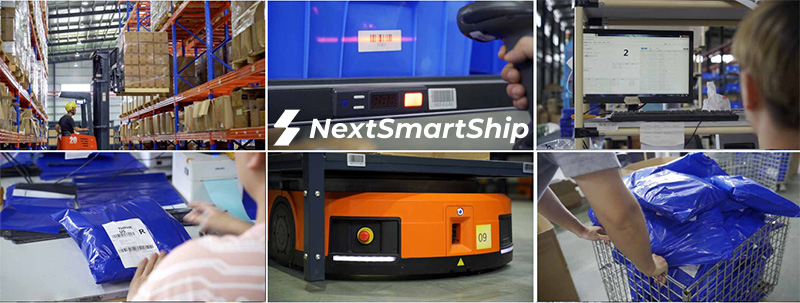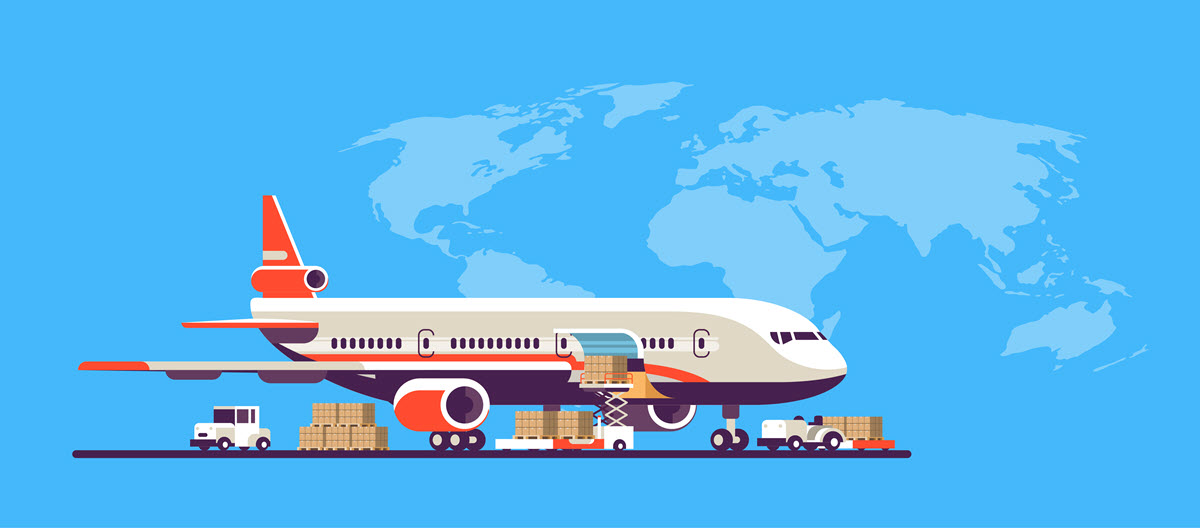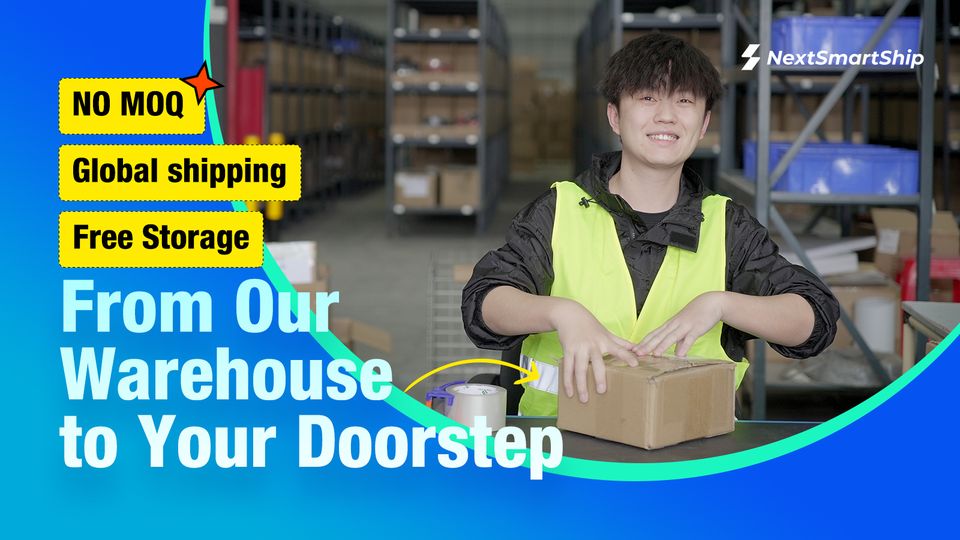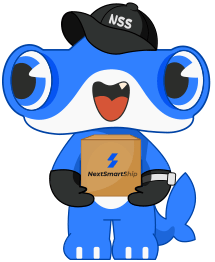As a small business owner based in Australia, importing your products from China is often the best option compared to handling the manufacturing process yourself. However, one of the most neglected aspects of sourcing products from China is how to ship products from China to Australia.
The last thing you want is for your goods to get held up in customs due to incorrect documentation or end up paying hefty port charges.
In this article, we’ll cover crucial aspects you need to know to successfully ship products from China to Australia.
Below is an overview of what you can expect from this article:
- Part 1: Ways to ship from China to Australia
- Part 2: How much does it cost to ship from China to Australia?
- Part 3: How long do packages from China take?
- Part 4: Customs clearance process in Australia
- Part 5: Know your incoterms
- Part 6: What is the best way to ship products from China to Australia?
Ways to Ship from China to Australia
There are five main ways of importing products into Australia and they include;
- Air freight
- Sea freight
- Express shipping
- International postal shipping
- Dedicate line shipping
There are several options available to facilitate this process and choosing the one suitable for your business depends on the following factors:
- Speed or the time frame you need goods delivered
- Budget
- Weight and volume of the cargo
Let’s take a deeper look at the available shipping options.
Express shipping
Express shipping is the fastest option and the most expensive shipping. It’s ideal when you have time-sensitive goods such as perishable products or when you need to capitalize on items with high demand during the holiday season.
Carriers are usually the best option for express shipping because packages arrive in less than 5 days. The most notable carriers include DHL, UPS, FedEx, and TNT.
Pros
- The best option for perishable goods and seasonal items
- Doesn’t affect your profit margin if you sell smaller, high-priced products
Cons
- Limited to shipping smaller items
- You have to incur extra charges
Air freight
Air freight offers fast shipping and lower pricing compared to express shipping. It’s usually 30% cheaper than express shipping. Air freight is the most cost-effective approach for shipments weighing less than 100 kilograms. In addition, the volume of the cargo should not exceed 1.5-2 cubic meters.
You may end up paying extra for special cargo goods. This includes live animals, frozen foods, or wet cargo. Bear in mind that everyday items such as lithium battery-powered devices like laptops, phones, cameras, toys, and cameras fall under the category of special cargo too.
Pros
- The best option for medium-sized shipments
- Has more flexibility compared to sea freight
Cons
- It’s not ideal for shipping heavy cargo
- Air shipment restricts shipping goods with powerful magnets or aerosols
- Having to incur more costs on special cargo
Sea freight/Ocean freight
Shipping by sea is the most cost-effective way to import products from China to Australia. Here, you get to choose between a Full Container load (FCL) and a Less Than Container load (LCL).
FCL shipments are ideal for higher-volume shipments ranging from 14 cubic meters. LCL shipments work best for low-volume shipments between 2 to 13 cubic meters.
When shipping using the FCL, the container is used for a full single shipment. This also means that you’ll be responsible for the entire cost of shipping. The advantage of this is that the risk of damage gets reduced because the interaction with the shipment is reduced to just you and your supplier.
Once your supplier loads FCL shipments, the container is sealed and get sent to you unsealed (unless customs intercepts the shipment). Sealing helps to protect your goods from damage while in transit. That’s the reason why FCL shipments arrive a few days earlier than LCL shipments.
On the other hand, LCL shipments have loading and unloading stages because it involves items from numerous suppliers. That’s because you’re sharing container space with other importers as well as the cost. It’s also one of the main reasons you may encounter delays in your shipment.
Sea freight exposes your goods to numerous weather conditions that’s why proper packaging, labeling, and palletizing should be applied.
Pros
- The best approach if you have a large load
- Cheaper than both express and air freight
Cons
- It’s the slower option
- You have to prepare for bad weather
- Run the risk of backlog issues at the ports
Dedicated line shipping
Dedicated line shipments involve a shipper purchasing a route from a carrier in order to ship goods exclusively. This way, nothing is mixed together, so no other customers or other shipments stand in your way.
The dedicated line service is usually cheaper than using pooled delivery carriers like FedEx or UPS. Companies that offer dedicated line shipping from China are Yanwen and Yunexpress. It’s faster than sending postal parcels as well as mir-range products in large quantities.
International postal shipping
This mode of shipping is slower than international express and dedicated line shipping. However, it’s the cheapest option, making it a cost-effective alternative for importing goods from China to Australia. International postal shipping is ideal for normal goods that are subject to the restrictions of couriers.
How Much Does it Cost to Ship from China to Australia?
The cost of shipping will depend on the size of your cargo and the mode of transport you choose.
The cost of sending goods using dedicated line shipping varies based on the package weight and country of destination. For instance, you’ll incur more charges for sending a large box to Australia compared to sending a small box to Canada.
Sea freight is usually the cheaper option especially when shipping cargo that weighs more than 500 kilograms. The sea freight calculator estimates the cost of renting an FCL from China to Australia will be $1700 USD for a 20 ft container and $2200 for a 40 ft container.
According to Australia Trade, an LCL will cost between $150 and $250 AUD per cubic meter for the value that’s greater.
Note that these prices are port-to-port estimates for you also need to factor in handling fees on both ends and other additional costs that may come up.
Air freight pricing starts at $5 USD per kilogram. However, freight rates differ between different carriers.
Furthermore, you’ll need to prepare for other costs when importing goods from China to Australia. These costs include insurance and customs charges but we’ll cover these later in the article.
How Long Do Packages Take from China to Australia?
Here is a table showing how long you can expect to wait for your shipment from China to Australia by sea.
| China sea ports | Australia sea ports | Days |
| Shenzhen | SydneyMelbourne
Brisbane Adelaide |
1115
11 30 |
| Shanghai | SydneyMelbourne
Brisbane Adelaide |
1720
13 28 |
| Hong Kong | SydneyMelbourne
Brisbane Adelaide |
1222
28 30 |
If you choose the air freight option, you can expect your shipment within 12 days while express shipments get delivered within 5 days.
It’s a great idea to keep track of your packages while in transit so you can know if you’re experiencing delays and plan your order delivery process accordingly. In order to track packages, you’ll need an alphanumeric code.
This tracking code has 9 digits and 2 letters. It helps you determine the exact location of your shipment and if you’ll experience some delays. You can access the code through China Post, Parcel App, track-trace, or 17track.net.
Customs Clearance Process in Australia
When importing cargo, you need to make sure that the seaport or the airport is approved to land your goods. You’ll be required to provide information to the Department of Agriculture, Fisheries, and Forestry as well as the Departure of Home Affairs about your cargo.
The documents needed include;
- Certificate of origin
- Bill of lading
- Commercial invoice
- Letter of credit
- Customs value declaration
- Proof of insurance
- Packing list
- Customs import declaration
The department then issues you with the directive that your goods are released from the biosecurity control. If further action such as treatment, inspection, or isolation, you’ll be notified.
Some goods require you to have a special permit to import such as pharmaceuticals, chemicals, and produce. You may also be required to quarantine some animals and plants.
The ChAFTA (China- Australia Free Trade Agreement) enables importers to get preferential tariff treatment for eligible goods. If you know the harmonised system (HS) code for your product, you can look up the schedule under FTA text and tariff schedules.
It’s worth noting that ChAFTA doesn’t eliminate the goods and service tax or the import processing charge for imports from China.
If your goods are valued above $1000 AUD, you’ll have to pay import duty and goods and service tax (GST) on them.
Customs typically charge under $200 AUD for processing and the GST will be charged at 10% of the sum of the valuation of your goods
The GST applies when importing goods regardless if your company is GST registered. The customs import duty rate ranges from 0% to 10% of the price you paid for the goods. However, the rate for most goods is 5%.
The GST is usually charged at 10% of the total sum of the following:
- Valuation of the goods
- Customs import duty
- Insurance
- Shipping to Australia
Some goods are eligible for concessions and may help you reduce the amount of duty you’re required to pay.
Know Your Incoterms
Incoterms are terms used in international shipping to clarify the obligations of each party and standardize trade between two countries.
Below is a rundown of the 6 most common incoterms you need to know.
EXW (Ex Works)
This states that the seller makes the cargo available at the designated location such as a factory or warehouse on an agreed date and the buyer is responsible for the costs and logistics thereafter.
CIF (Cost, Insurance, and Freight)
This means that the seller is responsible for the costs of shipping the cargo and obtaining insurance to protect the buyer from damages to the cargo while in transit but once the goods reach the buyer’s port, the risk is transferred.
FOB (Free on Board)
This is when a buyer or seller becomes responsible for the transported goods. This incoterm helps to determine who bears the risk and the transportation costs.
DDP (Delivered Duty Paid)
The DDP is a delivery agreement where the seller assumes all the risks and costs for the goods until the buyer receives them. This agreement includes shipping costs, insurance, and paying import and export duties.
DPU (Delivered at Place Unloaded )
The DPU stipulates that the seller assumes all the costs and risks until the cargo is unloaded at the designated destination.
What’s the Best Way to Ship Products from China to Australia?
LCL is the cheapest option for bulk shipments ranging between 2-13 cubic meters when importing goods from China to Australia. If you have higher volume shipments above 14 cubic meters, FCL is the better option.
If you find yourself in need of speed to meet customer orders or catch up with seasonal demand, express shipping is the ideal option as you won’t have to deal with customs and your goods arrive at your doorstep.
If you need to ship small parcels below 2kg from China to Australia, ePacket shipping is the way to go. A great scenario for using this mode of shipping would be to try out product samples sent by your wholesale supplier from China. ePacket partners with Australia Post and you can track parcels door-to-door.
When it comes to ePacket shipping, your items can’t be valued over $400 AUD. The packet sizes have a maximum weight of 2kg and 1kg can cost $50 AUD or more.

How NextSmartShip Can Help
If you’re looking for a reliable and affordable company to handle the logistics part of importing your goods from China to Australia, consider using NextSmartShip. We’re an end-to-end fulfillment service that handles storage, customized packaging, order processing, returns, and shipping for you.
We’re professionals at shipping all kinds of products, no matter the size and weight. If you’re planning to import goods in a shipping container or just a small package with valuable jewelry in it, NextSmartShip is well-equipped to handle your shipment.
Moreover, we can handle B2B fulfillment, Shopify order shipping, and crowdfunding backer rewards fulfillment. If you’re a seller at Amazon Australia, NextSmartShip also provides all the support you need for FBA prep.
NextSmartShip has local facilities in Australia to help you store your inventory safely. Our warehouses are well-equipped with Automated Storage and Retrieval Systems as well as Automated Guided Vehicles to ensure efficient inventory handling.
Our aim is to help you navigate the complexities of getting your products from China and successfully importing the goods into Australia smoothly. We also have fulfillment centers in Europe, the UK, and the USA to help you scale your business into new markets.
Feel free to reach out to us today for a free, no strings attached consultation and we will help you with shipping items from China to Australia and beyond.






